Retention is not about having the right opportunities. It's about handling the opportunities right.
Popup visitor retention refers to the strategic use of popups on a website to engage and retain visitors, encouraging them to stay longer, interact more, and ultimately convert. By utilizing well-designed and strategically placed popups, businesses can significantly enhance their ability to keep visitors engaged and reduce bounce rates.
Retaining visitors is crucial for any online business. It directly impacts key metrics such as time on site, bounce rate, and conversion rates. The longer a visitor stays on a site, the higher the chances of them converting, whether that means making a purchase, signing up for a newsletter, or engaging with the content. Effective visitor retention strategies lead to increased customer loyalty and repeat visits, which are essential for sustainable business growth.
Overview of Strategies for Visitor Retention
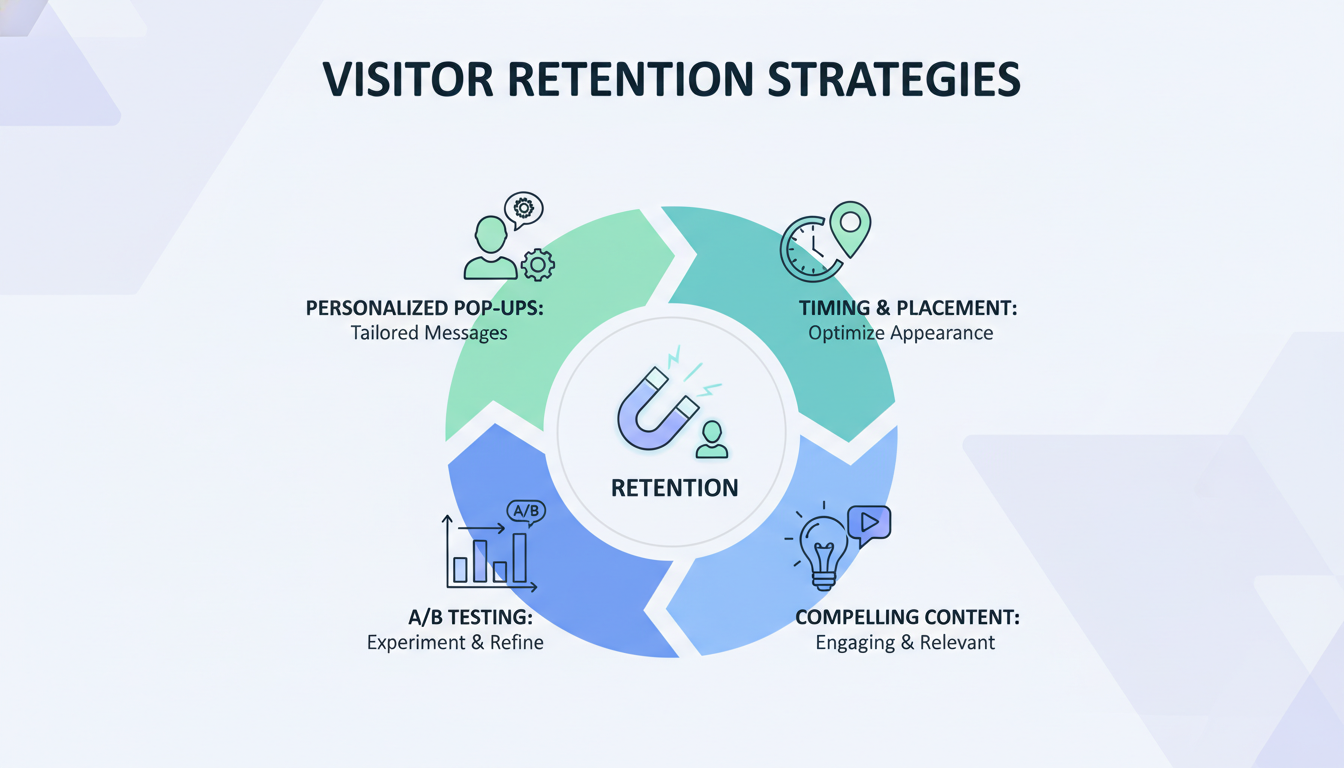
To effectively retain visitors, businesses must employ a variety of strategies. These include:
Personalized Popups: Tailoring messages based on visitor behavior and preferences.
Timing and Placement: Ensuring popups appear at the right time and place to maximize engagement without disrupting the user experience.
Compelling Content: Using engaging and relevant content that resonates with the target audience.
A/B Testing: Continuously testing and optimizing popup designs and messages to improve performance.
Understanding Popup Visitor Retention
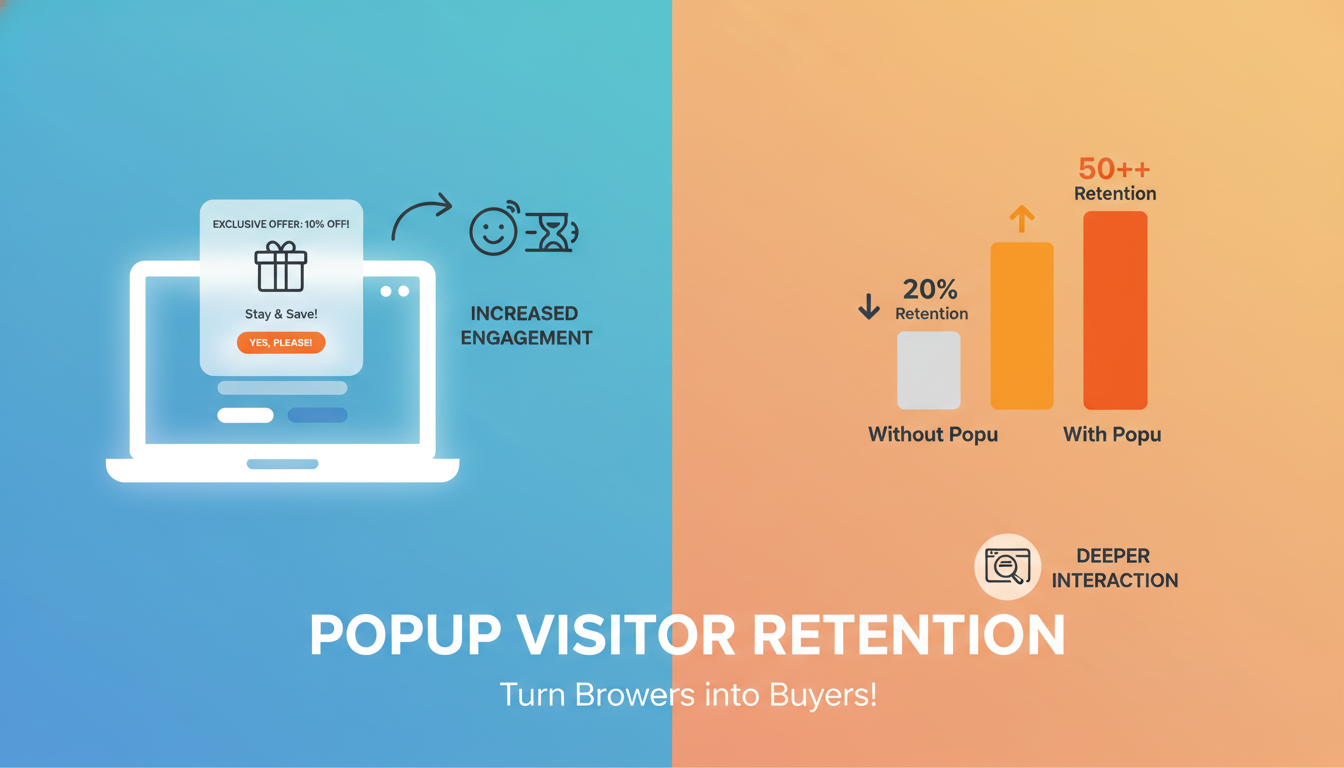
What is Popup Visitor Retention?
Popup visitor retention is the practice of using popups to engage website visitors in a way that encourages them to stay longer and interact more deeply with the site. This can involve offering discounts, gathering feedback, or simply providing valuable information at the right moment.
Key Metrics to Track
When implementing popup strategies, it's important to track key metrics to measure effectiveness:
Conversion Rate: The percentage of visitors who take the desired action.
Bounce Rate: The percentage of visitors who leave the site after viewing only one page.
Time on Site: The average amount of time visitors spend on the site.
Engagement Rate: The level of interaction with the popups and other site elements.
Differences Between Retention and Engagement
While retention focuses on keeping visitors on the site, engagement is about how actively they interact with the content. Engagement can include actions like clicking on links, filling out forms, or sharing content. Retention aims to maximize the time spent on the site and reduce the likelihood of visitors leaving quickly.
By understanding these key concepts and metrics, businesses can better tailor their popup strategies to not only keep visitors on their site but also encourage meaningful interactions that lead to conversions and long-term loyalty.
Benefits of Using Popups for Visitor Retention
Increased Time on Site
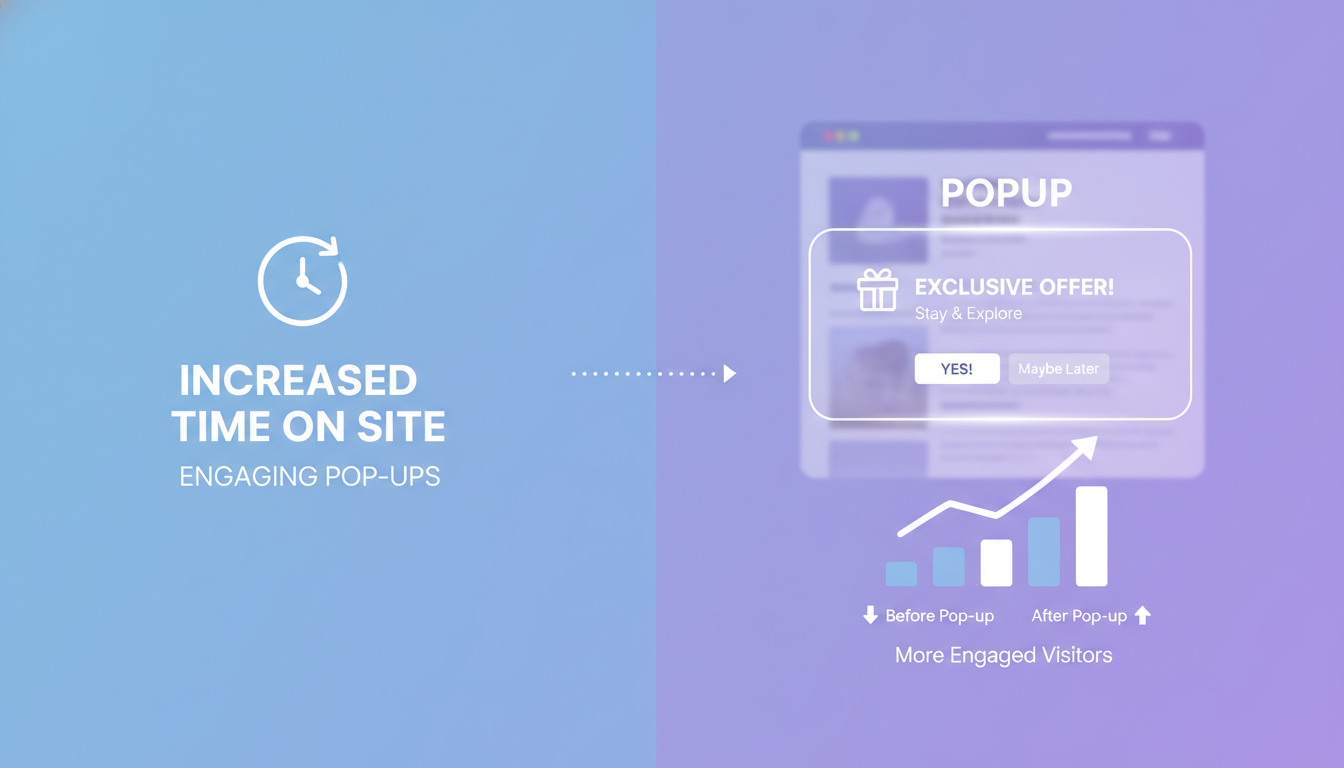
Engaging Popups: Popups can capture visitor attention and encourage them to stay longer on the site. By providing valuable information or offers at the right moment, visitors are more likely to explore further.
Improved Conversion Rates
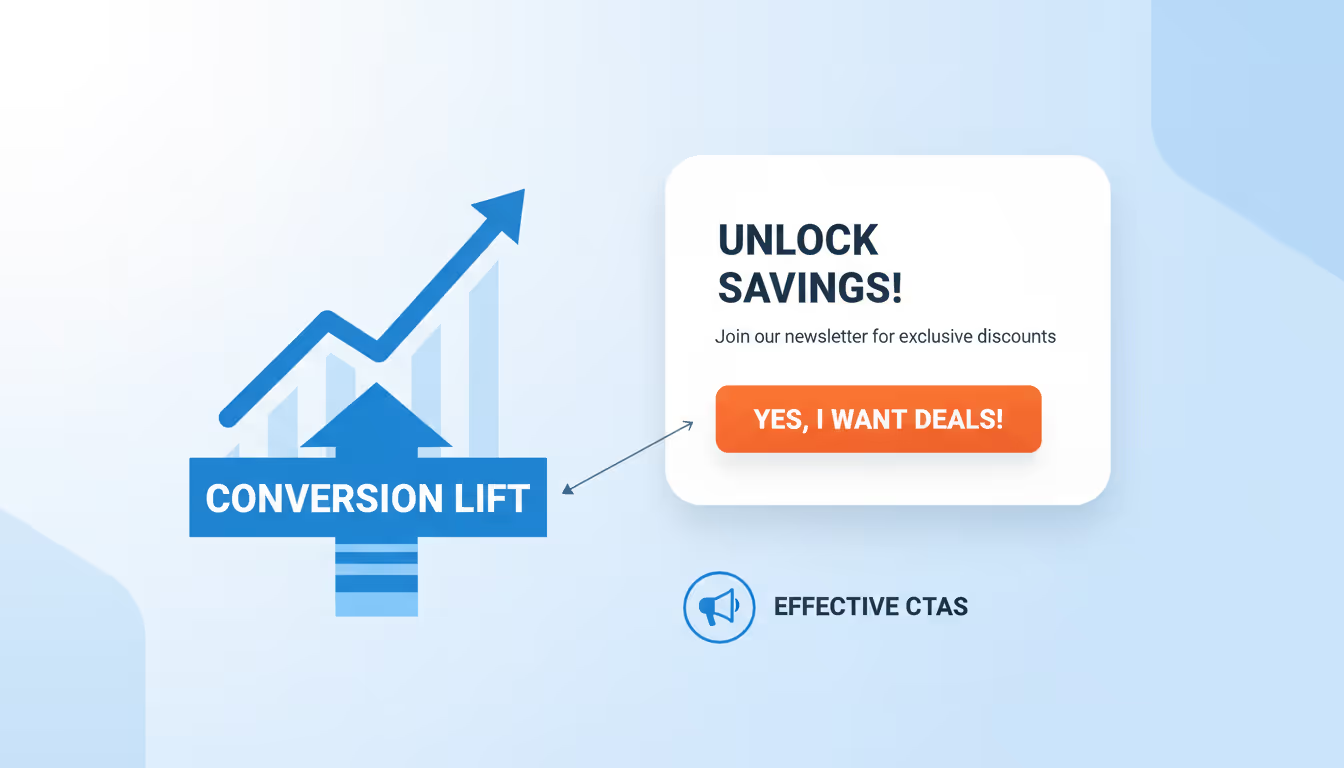
Effective CTAs: Popups with strong, clear calls to action (CTAs) can significantly improve conversion rates. Whether it's signing up for a newsletter, downloading a resource, or making a purchase, well-timed popups drive user actions.
Enhanced User Experience

Personalized Experiences: Popups can be tailored to individual visitor behaviors and preferences, creating a more personalized and engaging user experience. This customization can make visitors feel valued and understood, enhancing their overall experience on the site.
Building Customer Loyalty
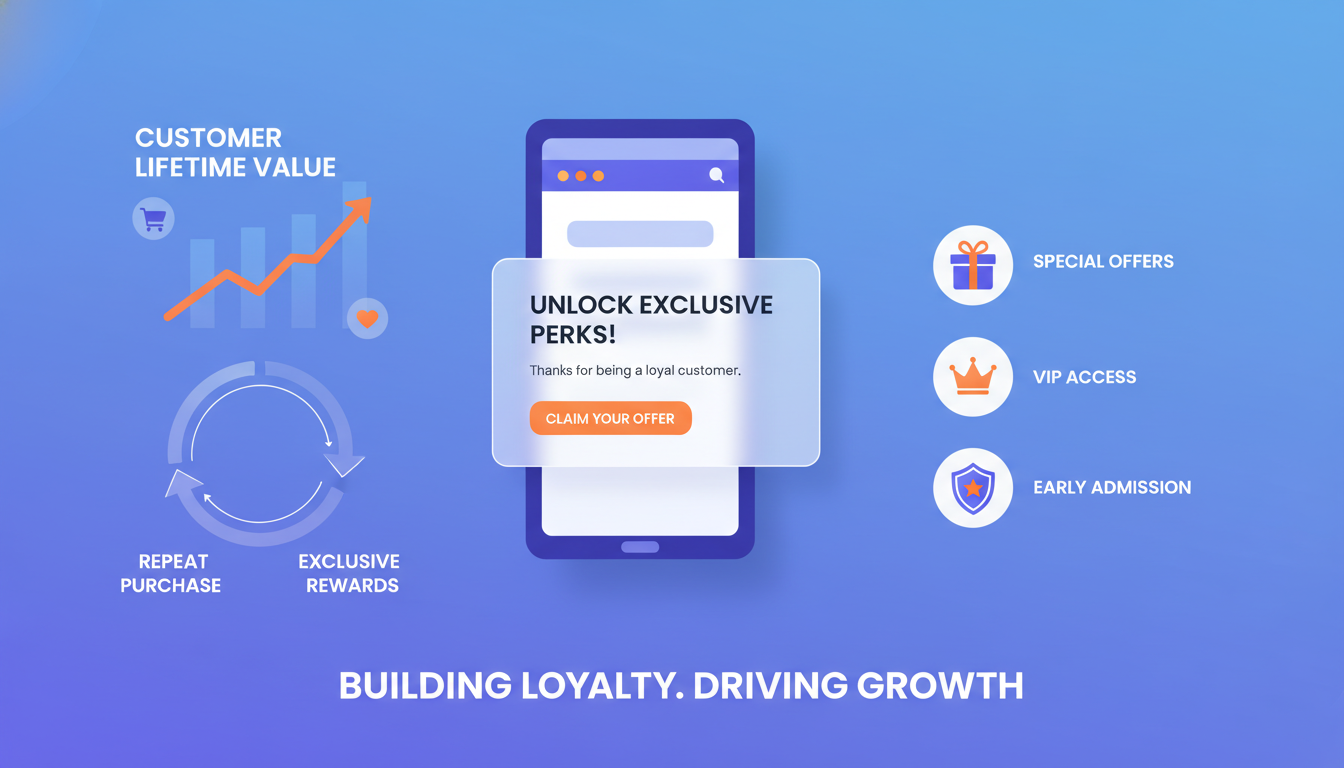
Retention Campaigns: Popups can be used to deliver loyalty programs, special offers, or exclusive content to returning visitors. This helps in building a strong relationship with customers, encouraging repeat visits and long-term loyalty.
Types of Popups for Visitor Retention
Welcome Popups
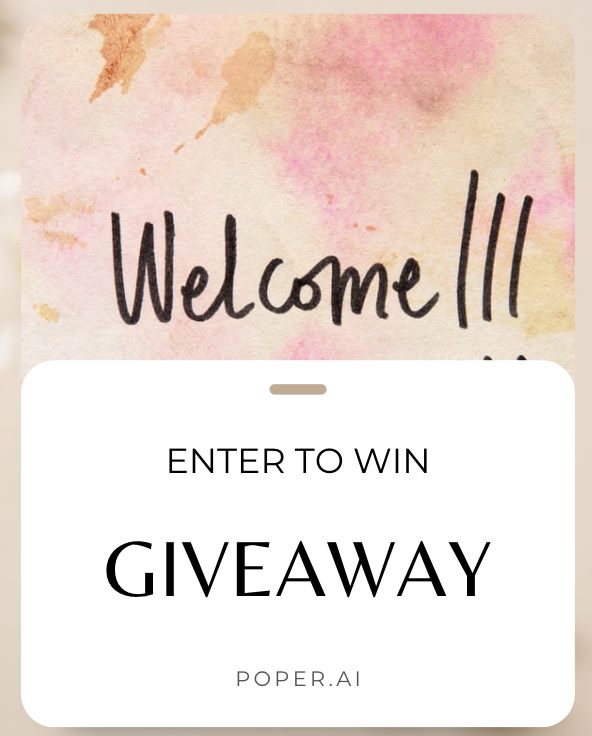
First Impressions: These popups greet visitors as they land on the site, often offering a welcome discount or introducing key features. They set a positive tone and engage users from the start.
Exit-Intent Popups

Preventing Exits: Exit-intent popups appear when a user is about to leave the site, offering last-minute deals or asking for feedback. They provide a final opportunity to retain the visitor's attention.
Scroll Popups

Engagement on Scroll: These popups appear when a user scrolls down a certain percentage of the page. They target engaged readers who are more likely to interact with the popup content.
Time-Delay Popups
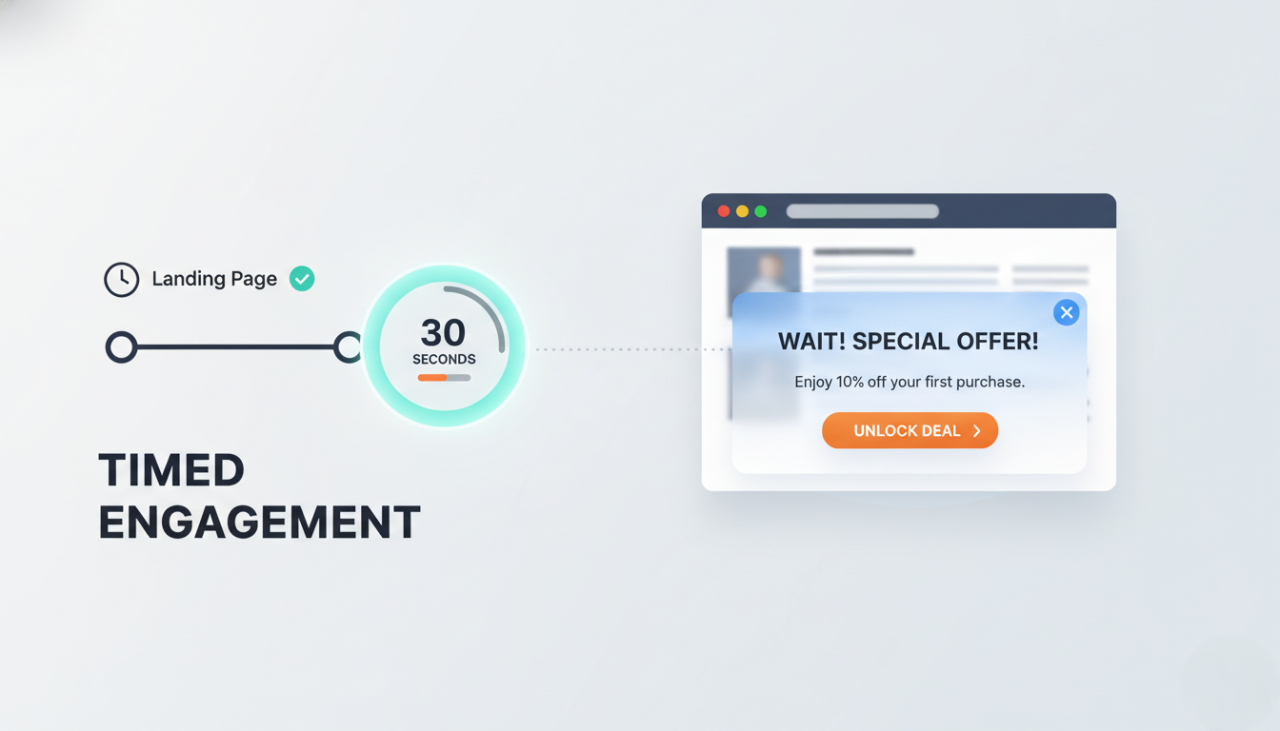
Timed Engagement: Time-delay popups appear after a visitor has spent a specific amount of time on the site. They ensure that the visitor has had some time to explore before being presented with additional offers or information.
Click-Triggered Popups

Interactive Prompts: These popups are triggered by user actions, such as clicking on a specific link or button. They provide contextual information or offers based on the user's interaction.
Best Practices for Designing Retentive Popups

Crafting Compelling Headlines
Grab Attention: A strong headline is crucial for a popup's success. It should be concise, clear, and compelling enough to capture the visitor's attention immediately.
Keeping Messages Clear and Concise
Focused Content: Popups should deliver their message quickly and effectively. Avoid clutter and keep the content focused on the primary goal of the popup.
Utilizing High-Quality Images and Videos
Visual Appeal: High-quality visuals can make popups more engaging and appealing. Use relevant images and videos to support the popup's message and attract visitor attention.
Strong Call to Action (CTA)
Driving Action: A well-designed CTA is essential for guiding visitors towards the desired action. Use clear and action-oriented language that leaves no doubt about what the visitor should do next.
By implementing these best practices, businesses can create highly effective popups that not only retain visitors but also enhance their overall experience on the site.
Timing and Placement Strategies
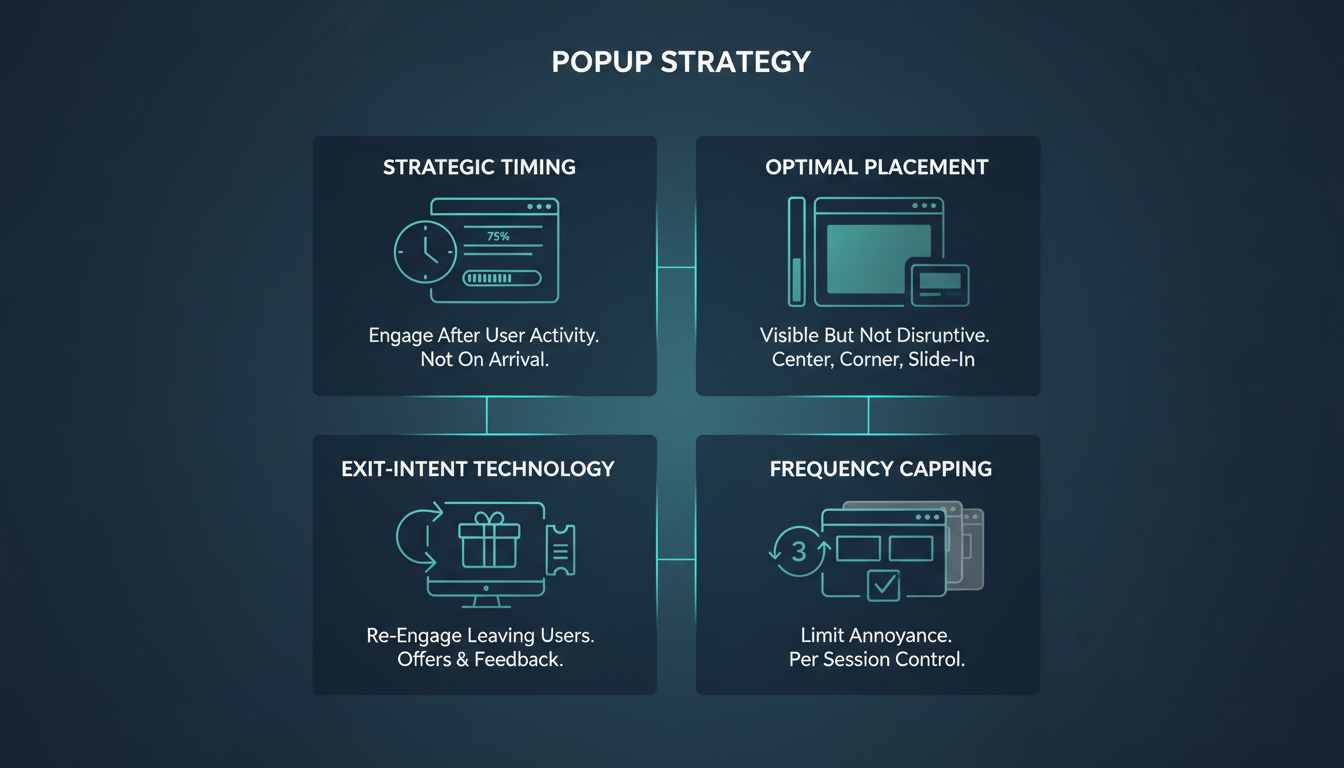
Best Times to Display Popups
Strategic Timing: Timing is crucial for popup effectiveness. Display popups when users are most engaged, such as after they have spent some time exploring your site. Avoid displaying popups immediately upon landing, as this can be intrusive.
Optimal Placement on Your Website
User-Friendly Placement: Position popups in areas where they are visible but not disruptive. Common placements include the center of the screen, bottom corners, or as a slide-in from the side. Ensure they do not obstruct key content.
Using Exit-Intent Technology
Retaining Exiting Users: Exit-intent popups detect when a user is about to leave the site and display a message to re-engage them. This can include special offers, discounts, or requests for feedback, providing a final opportunity to retain visitors.
Frequency Capping to Avoid Annoyance
Balancing Frequency: Avoid overwhelming visitors by controlling how often popups appear. Implement frequency capping to ensure that popups are shown only a limited number of times per session or user. This helps maintain a positive user experience and reduces the risk of popup fatigue.
Personalization Techniques

Personalized Messaging Based on User Behavior
Behavioral Insights: Utilize data on user behavior to tailor popup messages. For instance, if a visitor frequently views a specific product category, show popups related to that category. Personalized messaging increases relevance and engagement.
Segmenting Audiences for Targeted Popups
Audience Segmentation: Divide your audience into segments based on demographics, behaviors, or other criteria. Create targeted popups for each segment to address their specific needs and interests, enhancing the effectiveness of your popups.
Dynamic Content for Individual Users
Dynamic Popups: Use dynamic content to change the popup message based on individual user data. This could include personalized greetings, product recommendations, or special offers, making each popup more relevant and engaging.
Geo-Targeting and Language Customization
Localized Popups: Implement geo-targeting to show popups based on the visitor's location. Additionally, customize the language of the popup to match the visitor's preferred language, ensuring better comprehension and engagement.
Integrating Popups with Your Marketing Channels

Email Marketing Integration
Email Popups: Sync popups with your email marketing campaigns. For example, show a popup to visitors who click through from an email, reinforcing the email's message and driving further engagement.
Social Media Promotion
Social Media Sync: Use popups to promote social media campaigns. Encourage visitors to follow your social media profiles, participate in contests, or share content directly from the popup, extending your reach.
SMS and Push Notifications
Multi-Channel Approach: Integrate popups with SMS and push notification campaigns. This allows you to create a cohesive experience across multiple channels, increasing the chances of retaining visitors and converting them into customers.
CRM and Marketing Automation Integration
Seamless Integration: Connect popups with your CRM and marketing automation tools. This integration enables you to track user interactions, segment audiences, and personalize popup content based on CRM data, enhancing the overall effectiveness of your marketing efforts.
Step-by-Step Guide to Creating Retention Popups with Poper
Retention popups help you re-engage existing users, reduce churn, and encourage repeat actions such as renewals, upgrades, or continued usage. With Poper.ai’s easy-to-use editor and smart targeting, you can build effective retention popups in minutes.
Step 1: Log In to Poper.ai
Sign in to your Poper.ai account and open the dashboard. Click “New Popup” to begin creating your retention popup.
Step 2: Choose a Template or Start with AI
Browse templates related to Retention, Engagement, or Feedback. These layouts are designed to keep users active, remind them of value, or encourage renewals.
You can also start from scratch using the drag-and-drop editor, or use Poper AI to generate a customized retention popup based on your prompt.
Step 3: Customize the Design
Design your popup to reinforce value and trust.
Background colors should feel calm and reassuring, helping users feel confident about staying.
Graphics can include icons or visuals representing progress, benefits, loyalty, or continued access.
Messaging should focus on retention-driven value.
Headline examples include “Don’t Miss Out on Your Benefits,” “Stay With Us,” or “Continue Unlocking Premium Features.”
Supporting text can highlight ongoing value such as saved progress, exclusive features, updates, or loyalty rewards.
Call-to-action buttons should encourage continued engagement with text like Continue Membership, Stay Active, Renew Now, or Keep My Access.
Step 4: Add Engagement Elements
Include fields or actions that help users stay connected.
Email confirmation or preference selection can help personalize future communication.
Interactive elements such as limited-time offers, loyalty rewards, or renewal incentives can motivate users to stay.
Simple feedback options can also help users express concerns before leaving.
Step 5: Configure Display Rules
Set smart rules to show the popup at the right moment.
Triggers can include exit intent, inactivity, time on page, or repeated visits.
Placement works best on account pages, dashboards, pricing pages, or before subscription expiration.
Step 6: Publish and Monitor Performance
Preview the popup on desktop and mobile to ensure a smooth experience.
Click Publish once everything looks right.
Use Poper.ai’s analytics to track impressions, engagement, and retention-related actions. Use these insights to refine your popup over time.
Step 7: Test and Optimize
Run A/B tests to improve results.
Test different headlines.
Test messaging focused on benefits versus urgency.
Test CTA wording and incentive offers.
Testing helps identify what keeps users engaged and reduces churn most effectively.
Advanced Techniques for Popup Retention
Using AI for Intelligent Popup Scheduling
AI Integration: Leverage AI to schedule popups intelligently. AI can analyze user behavior and determine the optimal times to display popups, maximizing engagement and conversion rates.
A/B Testing for Optimization
Continuous Improvement: Conduct A/B testing to compare different popup designs, messages, and triggers. Use the results to optimize your popups for better performance and higher retention rates.
Dynamic Content in Popups
Personalized Experience: Implement dynamic content in your popups to provide a personalized experience for each visitor. Use data such as browsing history, purchase behavior, and preferences to tailor the popup content.
Integrating Popups with Retargeting Campaigns
Retargeting Synergy: Integrate popups with your retargeting campaigns to reinforce your message and encourage repeat visits. Show personalized offers to visitors who have previously engaged with your site.
Measuring the Success of Your Popup Retention Strategy
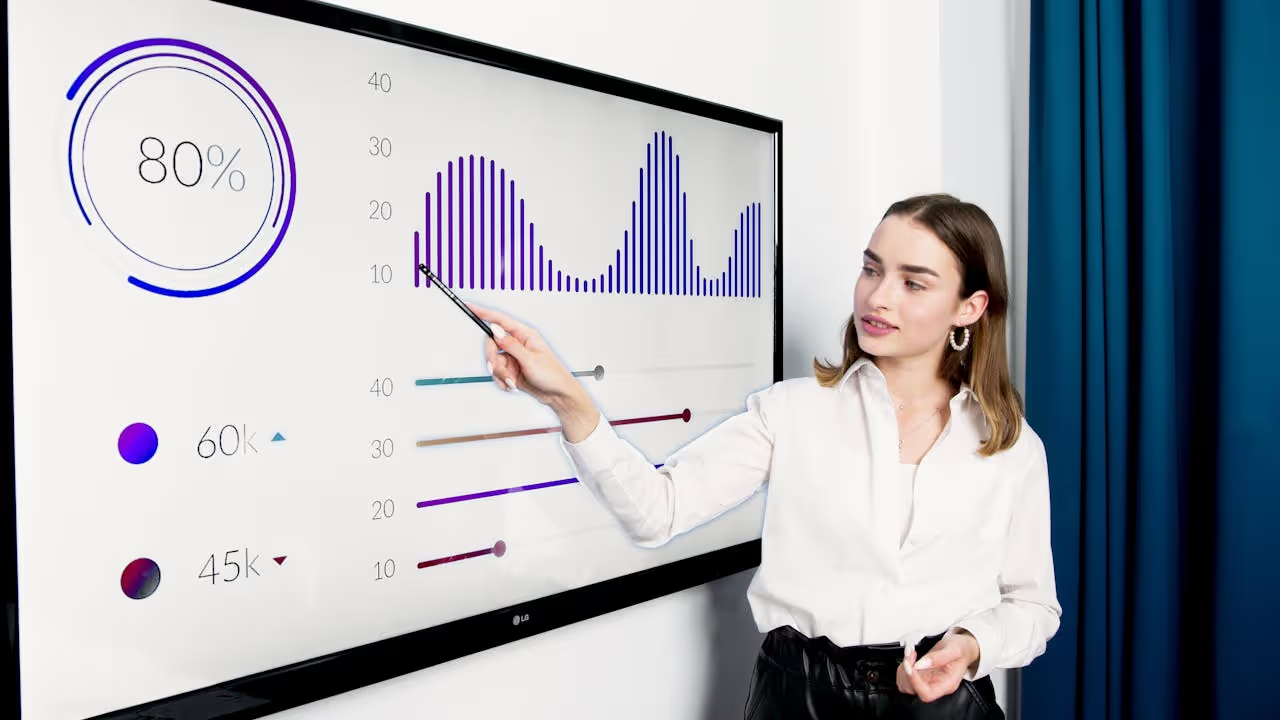
Key Metrics to Track
Conversion Rate
Conversion Insights: Monitor the conversion rate of your popups to evaluate their effectiveness. This metric indicates how many visitors take the desired action after seeing a popup.
Bounce Rate
Engagement Indicator: Track the bounce rate to understand how popups impact visitor engagement. A lower bounce rate suggests that popups are effectively retaining visitors on the site.
Time on Site
Visitor Retention: Measure the time visitors spend on your site to assess the impact of popups on retention. Increased time on site indicates successful engagement through popups.
Using Analytics for Performance Improvement
Data-Driven Decisions: Utilize analytics tools to gather data on popup performance. Analyze the data to identify areas for improvement and make informed decisions to enhance your popup strategy.
Common Mistakes to Avoid with Popups

Overloading Users with Information
Keep it Simple: Avoid overwhelming visitors with too much information in popups. Keep the message concise and focused on a single call to action to prevent confusion and disengagement.
Poor Mobile Experience
Mobile Optimization: Ensure that your popups are optimized for mobile devices. Poorly designed mobile popups can frustrate users and lead to high bounce rates.
Lack of Personalization
Personal Touch: Generic popups are less effective. Personalize your popups based on user behavior and preferences to make them more relevant and engaging.
Ignoring Data Privacy Concerns
Privacy First: Be mindful of data privacy regulations and user concerns. Ensure that your popups comply with privacy laws and clearly communicate how user data will be used.
Future Trends in Popup Visitor Retention
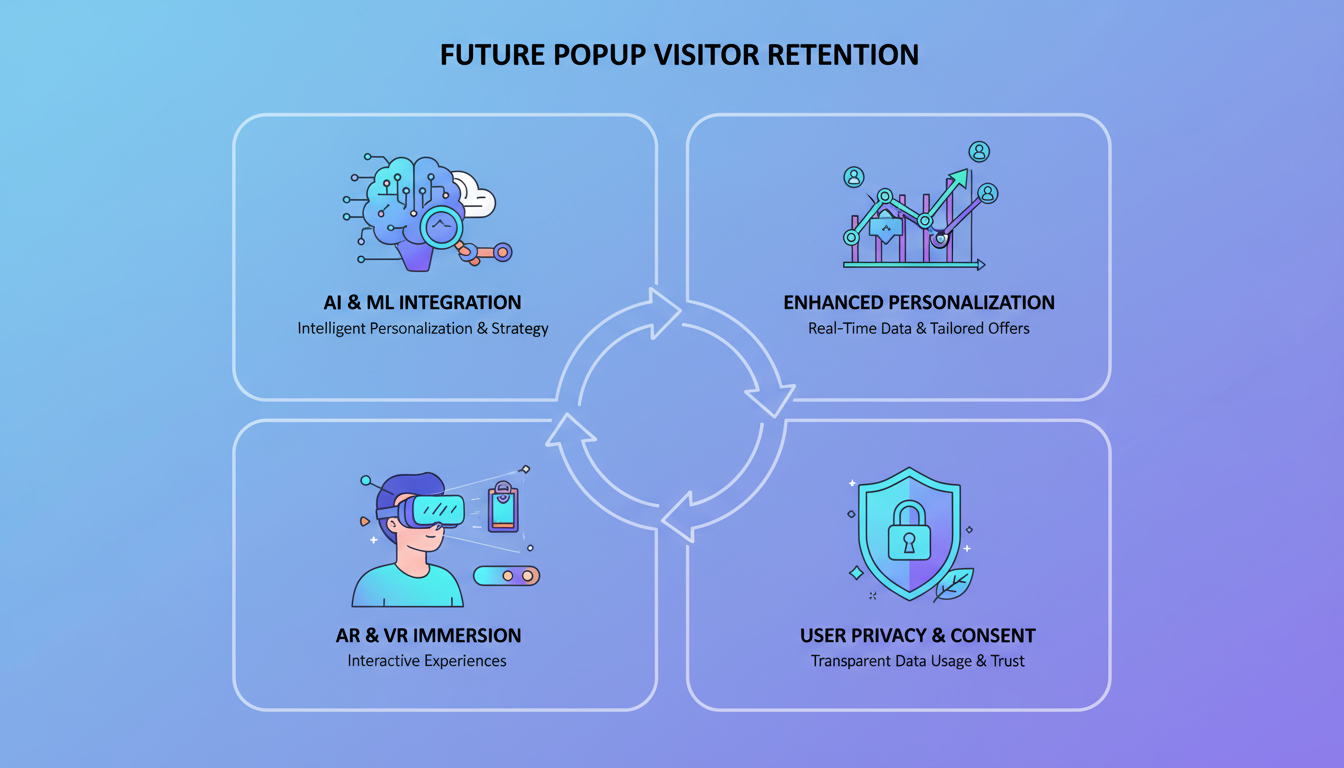
AI and Machine Learning Integration
Future of Popups: AI and machine learning will play a significant role in the future of popups. These technologies will enable more intelligent and personalized popup strategies, enhancing visitor retention.
Enhanced Personalization Techniques
Advanced Personalization: Future popups will incorporate more advanced personalization techniques, using real-time data to tailor messages and offers to individual users.
Increased Use of AR and VR
Immersive Experiences: Augmented reality (AR) and virtual reality (VR) will become more prevalent in popup design, providing immersive and interactive experiences for visitors.
Focus on User Privacy and Consent
Privacy Evolution: As privacy concerns grow, future popups will prioritize user consent and transparency. Clear communication about data usage and robust privacy practices will be essential.
FAQs
What are the benefits of using popups for visitor retention?
Popups can significantly increase visitor retention by engaging users with timely and relevant offers, thereby increasing the time they spend on your site. They help capture leads, promote special deals, and reduce bounce rates by offering something valuable just before the visitor leaves.
How can I ensure my popups are effective?
To ensure your popups are effective, focus on clear messaging, compelling call-to-action (CTA), and relevant offers. Utilize A/B testing to determine the best designs and messages, and ensure your popups are non-intrusive by using frequency capping and exit-intent technology.
How can I integrate popups with my marketing strategy?
Integrate popups with your marketing strategy by aligning them with your overall campaign goals. Use them to collect email sign-ups for your newsletters, promote social media campaigns, or integrate them with your CRM to personalize offers based on user behavior.
How often should I update my popup strategy?
Your popup strategy should be updated regularly based on performance data and user feedback. Conduct periodic reviews, at least quarterly, to assess the effectiveness of your popups and make necessary adjustments to improve engagement and conversion rates.
What common mistakes should I avoid when using popups?
Avoid common mistakes such as overloading users with too many popups, creating poor mobile experiences, failing to personalize popups based on user data, and ignoring data privacy concerns. Ensure your popups provide value without annoying visitors.
How do I measure the success of my popup campaigns?
Measure the success of your popup campaigns by tracking key metrics such as conversion rates, bounce rates, time on site, and engagement rates. Use analytics tools to gain insights into how users interact with your popups and adjust your strategy accordingly.
Can popups improve my conversion rates?
Yes, well-designed and strategically placed popups can significantly improve your conversion rates by capturing user attention at the right moment and providing compelling offers that encourage action.
How can I ensure my popups are mobile-friendly?
Ensure your popups are mobile-friendly by using responsive designs, keeping messages concise, and ensuring CTAs are easy to tap. Test your popups on various mobile devices to ensure they provide a seamless user experience.
Summary
Popup visitor retention is crucial for maintaining engagement and driving conversions on your website. By utilizing well-designed, strategically placed popups, you can significantly enhance user experience and build customer loyalty. Poper is an excellent tool to create effective popups with advanced targeting and personalization features. Remember to continuously optimize and test your popup strategies to stay ahead of the competition and maximize their impact on your marketing efforts.




